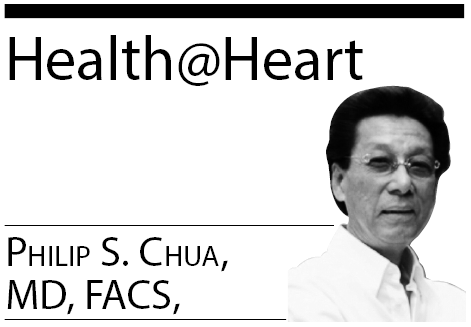WHILE cheetahs, gazelle, horses, deer, and other animals in the wild were obviously born to run, it is becoming clearer, medically, that we humans were born to walk, not to jog or run. While jogging became popular since the late 60s, forty years thereafter, the negative health effects became obvious, overshadowing the health benefits.
Jogging traumatizes the body, including the muscles, joints, heart and kidneys, especially when done excessively. Running thickens the heart tissue, causing fibrosis (scarring) that can cause atrial fibrillation. It also leads to cardiac diastolic dysfunction and stiffening of the large arterial walls. Other injuries include shin splints and stress fractures. More obvious and more common are injuries to the spine, hips, knee, and ankle joints, leading to arthritis of those joints and chronic pain. Some seniors eventually require hip or knee replacement.
Current research reveals that walking 8,000 brisk steps or more per day confers great health benefits, practically equal to the benefits from jogging, minus the attendant injuries from running. More importantly, most seniors are only able to brisk walk or walk but not jog anymore. Indeed, brisk walking is in.
Brisk walking is defined as walking 3 miles an hour: If one can recite lyrics of a song, with a pause (to breathe) between phrases, but unable to sing them, they are walking briskly.
The new study demonstrated that “walking just one to two days is still associated with significant reduction in all-cause and cardiovascular mortality.” Each additional day of walking provides even greater health benefits.
“People taking just 8,000 steps one or two days a week are also less likely to die over a ten-year follow-up period, 14.9 % less likely to die compared to people who were sedentary, and 16% reduction for those who walked 3 to 7 days a week,” concludes the study published in JAMA Network.
This is, indeed, a wonderful finding, which would inspire and encourage everyone, especially seniors, to take those 8,000 steps to better health. And add another day at their own pace and comfort every week or two till they reach their goal.
For those with medical issues, consult your physician before embarking on any exercise regimen.
Spring COVID booster?
There has been fake news on television and social media that claimed the bivalent COVID-19 booster was unsafe, causing cardiovascular side-effects. Thanks to a new French study, the world now has factual scientific data. The population-based study “found no evidence of an increased risk of cardiovascular events at 21 days among the recipients of the bivalent vaccine versus recipients of the monovalent vaccine, including strokes, heart attacks, pulmonary embolism and all four events combined.”
This is welcome news, especially to those immunocompromised and seniors with health issues, since the spring booster (bivalent) is recommended by the CDC, because those who had the original booster, with or without having been infected, are all recommended to have a spring booster. The reason is the immunity of those who had the first booster, and even those who have natural immunity from getting the infection have protection that would have waned by spring. Natural immunity is less stable, less consistent, and less effective than immunity from the vaccines. At any rate, the bivalent booster has been proven all over again to be safe and effective. Getting the bivalent booster this spring will confer safety from a serious residual COVID-19 infection and as of Monday, April 3, 2023, there were still more than a million (1,066,175) active cases, and 10 new deaths.
Seaweed and endometriosis
Polyunsaturated fatty acids (like omerga-3 and omega-6) reduce proliferation of endometriosis lesions and are most beneficial in managing this common female illness where tissues that line the inside of the uterus grow outside the womb and in places they do not belong (like the ovaries, fallopian tubes, and bowels, or even the lungs and the brain). It causes abdominal pains and irregular and painful period, among other symptoms, as well as pain during intercourse or bowel movements.
Seaweed, fish and nuts contain a lot of polyunsaturated fatty acids, and are found to be helpful when added to the diet. Seaweed has been long proven to benefit women with endometriosis, alleviating their symptoms. Adding more vegetables, particularly cruciferous ones, legumes, and fruits, providing rich antioxidants and fiber, also help. Dietary changes, adding those items listed above plus ginger, turmeric, and gluten-free items, certainly benefit women with endometriosis, as pointed out in the British Medical journal Open in 2020. This diet, together with prescribed therapy by a gynecologist, will make life a lot more comfortable to women with endometriosis.
Toxin triggers MS
Multiple Sclerosis (MS) is a long-term condition that afflicts the central nervous system, causing muscle weakness and vision problems, as the immune system stacks the outer coating of the nerve cells to the eyes. MS most often victimizes young adults between the ages 20 and 40, also seniors, more in women than men. There are about 2.8 million individuals around the world living with MS. The cause of MS is still a mystery. A new study has determined that “a toxin from a common bacterium may trigger MS in people with a genetic susceptibility.” This recent discovery would lead to more scientific investigation worldwide to eventually find a prevention and/or cure for multiple sclerosis, a gravely debilitating disease.
Do fish drown?
When thrown back to a body of water, fish do not drown. However, they do drown (suffocate) when the water does not have enough dissolved oxygen in it, like in eutrophication (too much nutrients or harmful chemicals in water), or drought. They also drown following the removal of their fins (as in harvesting sharks’ fins for Chinese soup delicacy). Throwing back sharks after fin removal results in their suffocation since they need their fins to swim. When their gills are damaged by predators, they also drown. So, technically, fish do drown too.
* * *
The opinions, beliefs and viewpoints expressed by the author do not necessarily reflect the opinions, beliefs and viewpoints of the Asian Journal, its management, editorial board and staff.
* * *
The main objective of this column is to educate and inspire people live a healthier lifestyle to prevent illnesses and disabilities and achieve a happier and more productive life. Any diagnosis, recommendation or treatment in our article are general medical information and not intended to be applicable or appropriate for anyone. This column is not a substitute for your physician, who knows your condition well and who is your best ally when it comes to your health.
* * *
Philip S. Chua, MD, FACS, FPCS, a Cardiac Surgeon Emeritus based in Northwest Indiana and Las Vegas, Nevada, is an international medical lecturer/author, Health Advocate, newspaper columnist, and Chairman of the Filipino United Network-USA, a 501(c)3 humanitarian foundation in the United States. He was a recipient of the Indiana Sagamore of the Wabash Award in 1995. Other Sagamore past awardees include President Harry Truman, President George HW Bush, Muhammad Ali, and Astronaut Gus Grissom (Wikipedia). Websites: FUN8888.com, Today.SPSAtoday.com, and philipSchua.com; Email: scalpelpen@gmail.com.






